v1.2.0
Tong Zhou
2025-09-21
v1.2.0.RmdOverview
Starting with the v1.2 series, the focus is on enhancing coloring functionality. Dual-factor coloring has been preliminarily explored in two existing features: DOMAINS implemented shape-color and color-color dual-factor coloring, while BINARY tested color parameter extensions by directly defining dual-factor coloring in the color parameter, though only supporting default palett. In v1.2.0, dual-factor coloring is now extended to all five TREE_COLORS subtypes, with the new color parameter syntax supplemented by a third element for palette specification.
Updates:
- New: TREE_COLORS supports dual-factor coloring (main group + gradient).
- New: The 3rd element of
colorcan specify a color set for base hues. - Fix: Legend is now rebuilt from the final DATA right before output, ensuring LEGEND order matches the DATA block and paving the way for unified legend handling in future refactors.
- Fix:
write_unit()now reports output file paths for user confirmation. - Fix: TREE_COLORS label subtype accepts
font_type = "normal"(and vectorization works). Previously, providing “normal” could be rejected as unsupported.
1. TREE_COLORS Dual-Factor Coloring
Dual-factor coloring follows the DOMAINS/BINARY strategy: the first factor defines a base hue per group; the second factor creates within-group gradients starting from the base hue.
All TREE_COLORS subtypes support dual-factor coloring:
range, clade, branch,
label, and label_background.
Range subtype example (dual-factor coloring)
library(itol.toolkit)
library(dplyr)
# Load dataset4
tree_1 <- system.file("extdata","dataset4/otus.contree",package = "itol.toolkit")
data_file_1 <- system.file("extdata","dataset4/annotation.txt",package = "itol.toolkit")
data_1 <- data.table::fread(data_file_1)
# Create unit with dual-factor coloring (Class as main factor, Family as gradient)
u_range <- create_unit(
data = data_1 %>% select(ID, Class, Family),
key = "TC_dual_range",
type = "TREE_COLORS",
subtype = "range",
color = c("Class", "Family", "nejm"),
tree = tree_1
)
# Write unit - v1.2.0 now reports output path for user confirmation
write_unit(u_range)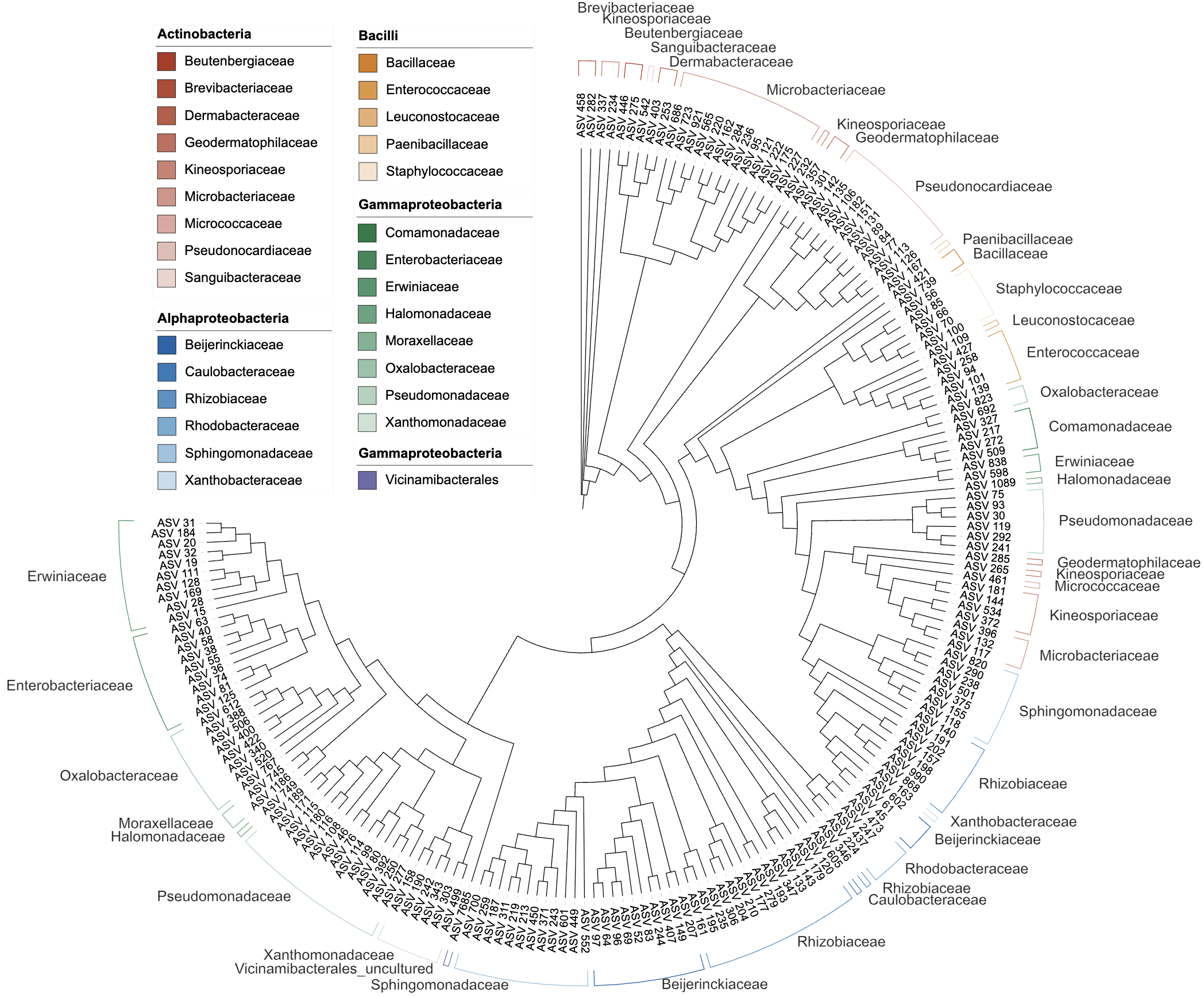
Range subtype example (dual-factor coloring)
Clade subtype example (dual-factor coloring)
# Dual-factor coloring also works with subtype = "clade"
u_clade <- create_unit(
data = data_1 %>% select(ID, Class, Family),
key = "TC_dual_clade",
type = "TREE_COLORS",
subtype = "clade",
color = c("Class","Family","nejm"), # optional palette
line_type = "normal", # or "dashed"; can also be a vector
size_factor = 4, # line width
tree = tree_1
)
write_unit(u_clade)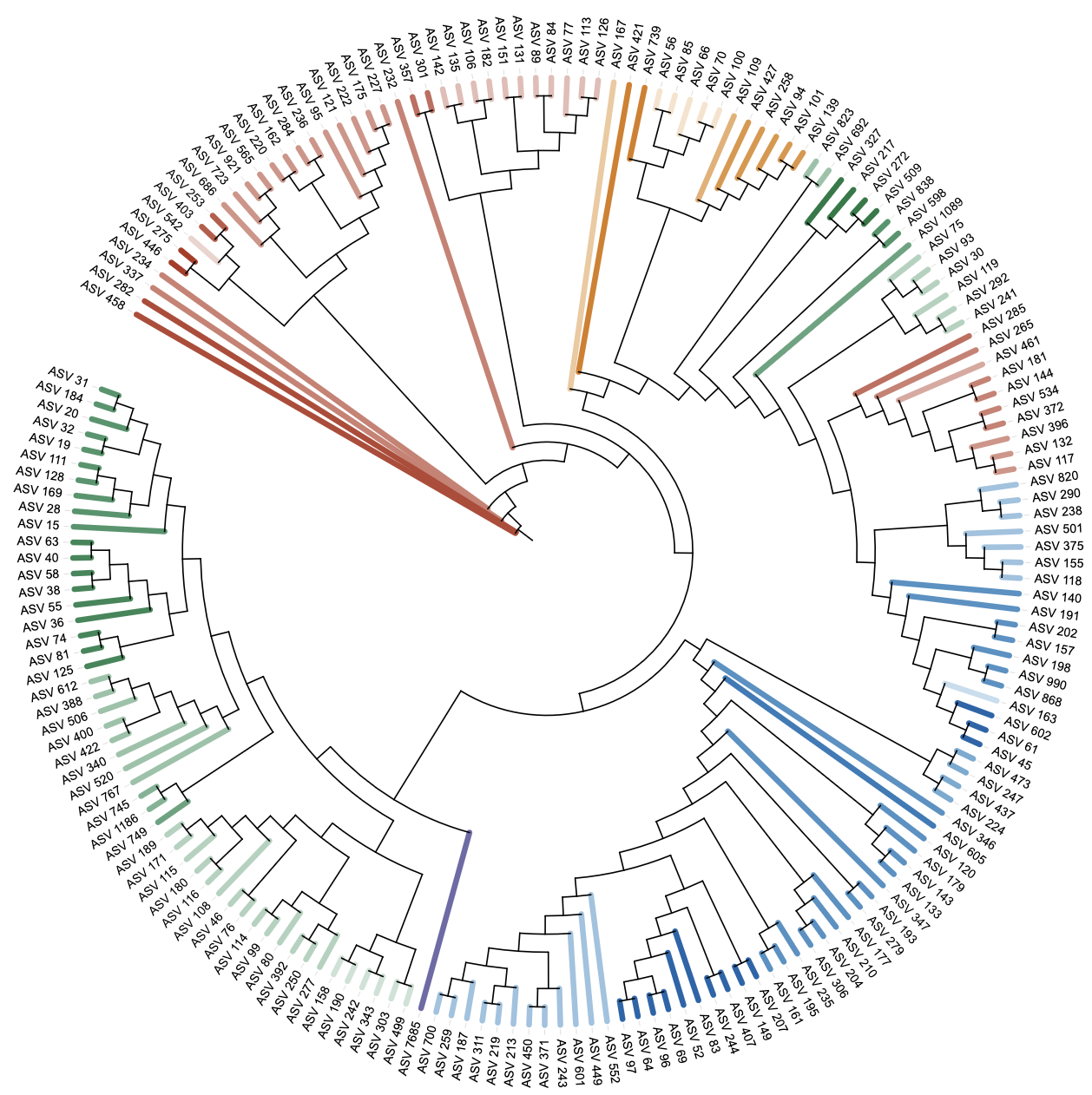
Clade subtype example (dual-factor coloring)
Branch subtype example (dual-factor coloring)
# Dual-factor coloring also works with subtype = "branch"
u_branch <- create_unit(
data = data_1 %>% select(ID, Class, Family),
key = "TC_dual_branch",
type = "TREE_COLORS",
subtype = "branch",
color = c("Class","Family","nejm"), # optional palette
line_type = "dashed", # example using dashed lines
size_factor = 3, # line width
tree = tree_1
)
write_unit(u_branch)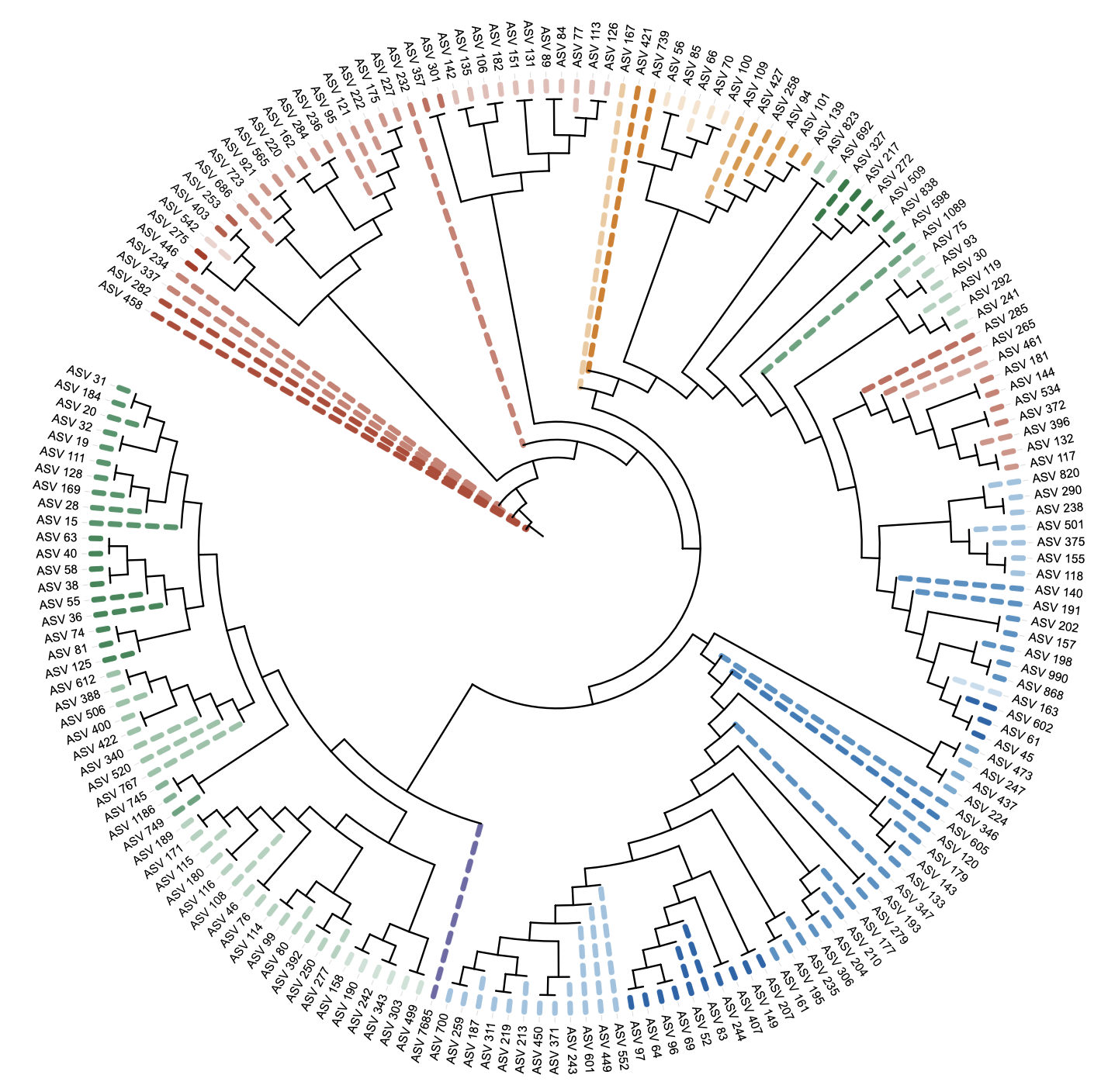
Branch subtype example (dual-factor coloring)
Label subtype example (dual-factor coloring)
# Dual-factor coloring also works with subtype = "label"
u_label <- create_unit(
data = data_1 %>% select(ID, Class, Family),
key = "TC_dual_label",
type = "TREE_COLORS",
subtype = "label",
color = c("Class","Family","nejm"), # optional palette
font_type = "normal",
size_factor = 2,
tree = tree_1
)
write_unit(u_label)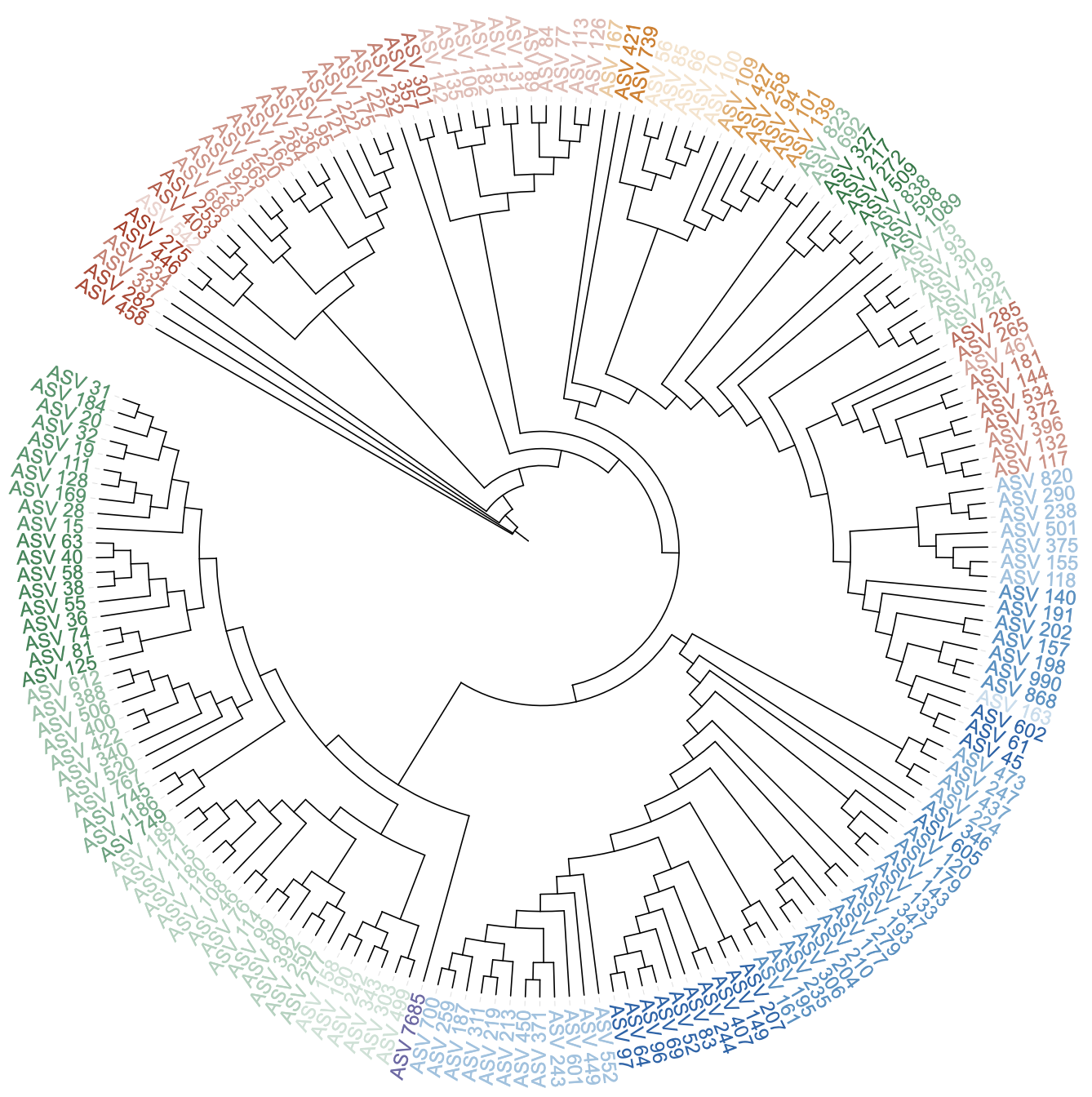
Label subtype example (dual-factor coloring)
Label background subtype example (dual-factor coloring)
# Dual-factor coloring also works with subtype = "label_background"
u_label_bg <- create_unit(
data = data_1 %>% select(ID, Class, Family),
key = "TC_dual_label_bg",
type = "TREE_COLORS",
subtype = "label_background",
color = c("Class","Family","nejm"), # optional palette
tree = tree_1
)
write_unit(u_label_bg)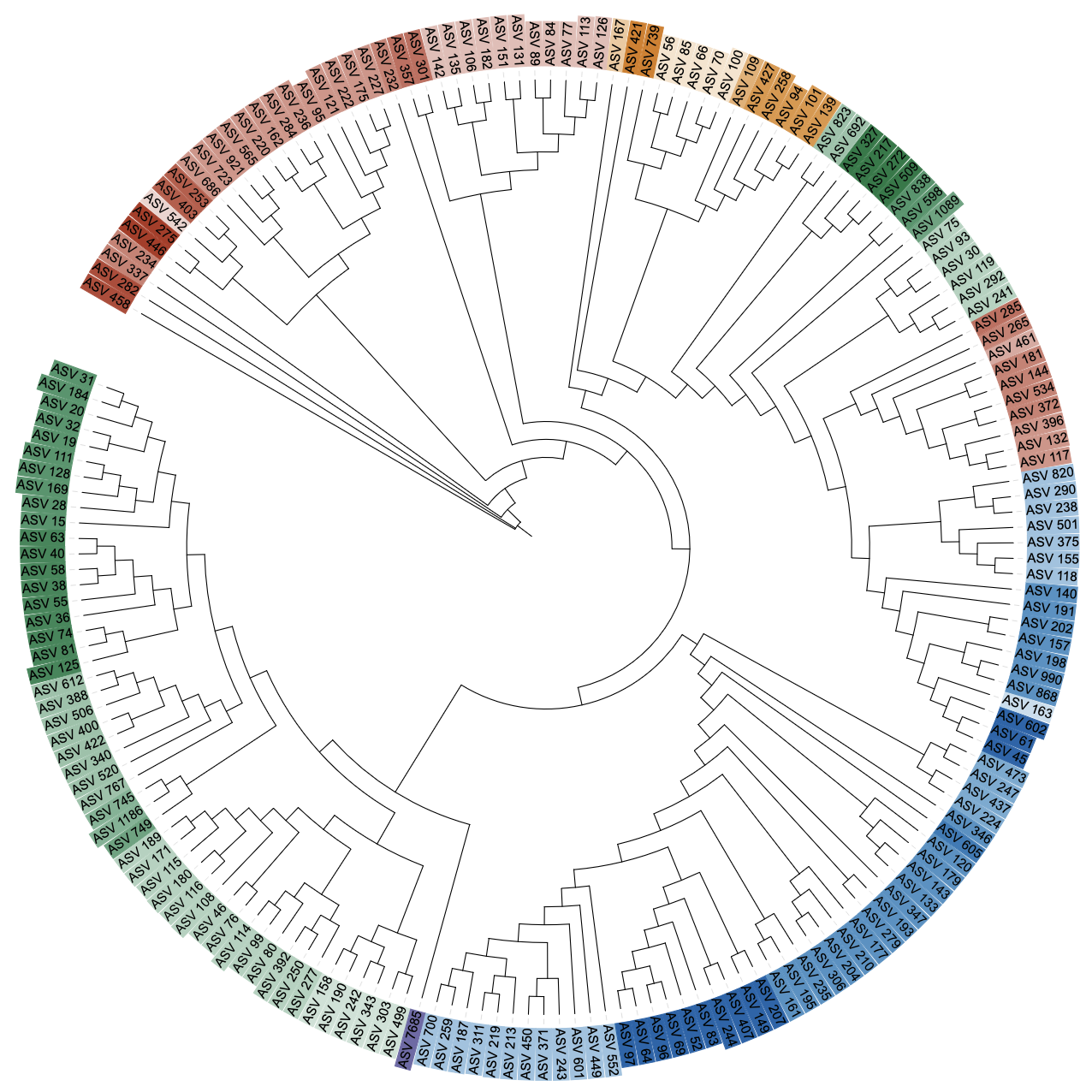
Label background subtype example (dual-factor coloring)
2. Third element of color as color set
Optionally specify a color set in the 3rd element of
color for base hues of the main groups.
u2 <- create_unit(
data = data_1 %>% select(ID, Class, Family),
key = "TC_dual_set",
type = "TREE_COLORS",
subtype = "range",
color = c("Class","Family","wesanderson"), # base hues from this set
tree = tree_1
)Notes:
- If the 3rd element exists in
get_color(set = 'ls'), it is used; otherwise it falls back to defaults. - With a single column name (e.g.,
color = "Group"), discrete palette mapping is applied.
3. Output pipeline improvement
Starting from v1.2.0, before writing the header lines, the final DATA is constructed first; then the legend (labels/colors/shapes) is rebuilt directly from that DATA order; finally, the header and data are written. On the surface, this guarantees consistency between the DATA block and the legend. More importantly, this change prepares a unified, centralized handling for legend and related metadata, simplifying future refactors and ensuring stable ordering across different dataset types.
# Use dataset4 for the pipeline demonstration
u_ex <- create_unit(
data = data_1 %>% select(ID, Class, Family),
key = "TC_pipeline",
type = "TREE_COLORS",
subtype = "range",
color = c("Class","Family","table2itol"),
tree = tree_1
)
# Output to a temporary file
out_file <- tempfile(fileext = ".txt")
write_unit(u_ex, out_file)
# Inspect the template file to confirm:
# - LEGEND_LABELS order matches the last column (labels) in DATA
# - LEGEND_COLORS are aligned one-to-one with LEGEND_LABELS
# readLines(out_file) |> writeLines()Note: In previous versions, legend could be composed before the final DATA selection/ordering, which sometimes caused mismatches. The new pipeline removes this class of issues by deriving legend directly from the final DATA.
Label font type bug fix (normal)
Background: - In older behavior, when using
type = "TREE_COLORS", subtype = "label", passing
font_type = "normal" could be rejected as “Unsupported font
type parameter”. - This was inconsistent with other accepted values
(“bold”, “italic”, “bold-italic”, ““).
What changed in v1.2.0: - The label subtype now
explicitly allows font_type = "normal". - Scalar
font_type is correctly vectorized to match the number of
rows; existing per-row vectors continue to work.
How to use:
unit_label <- create_unit(
data = data_1 %>% select(ID, Class, Family),
key = "v120_label_normal",
type = "TREE_COLORS",
subtype = "label",
color = c("Class","Family","nejm"), # dual-factor coloring still applies
font_type = "normal", # now accepted
size_factor = 2,
tree = tree_1
)
write_unit(unit_label, tempfile())Notes: - You can still use “bold”, “italic”, or “bold-italic”; or
supply a character vector (length = nrow(data)) for row-wise styles. -
If omitted, font_type defaults to “normal”.